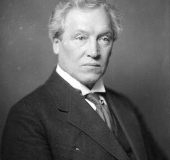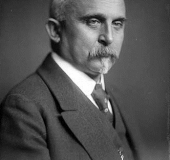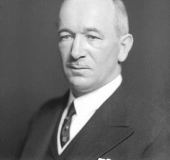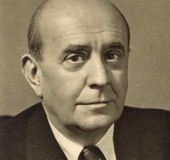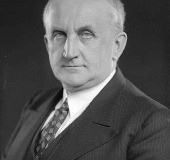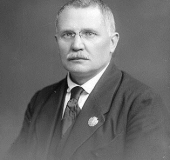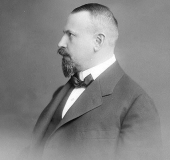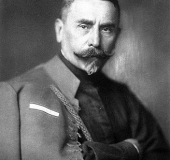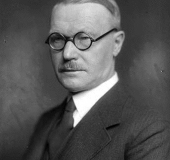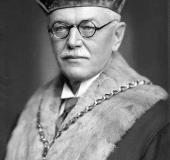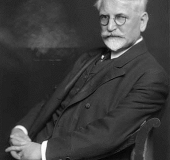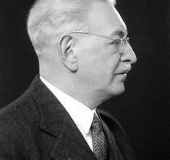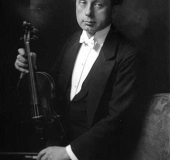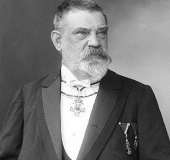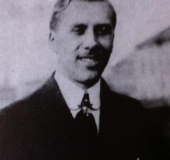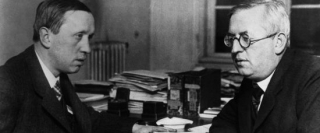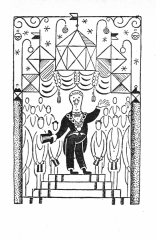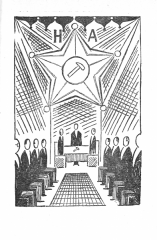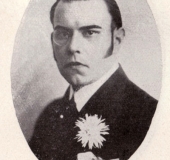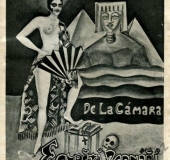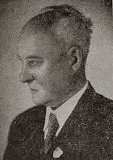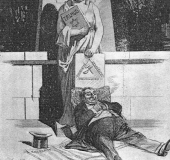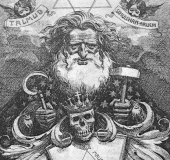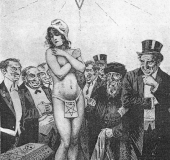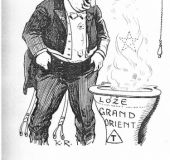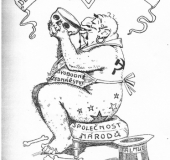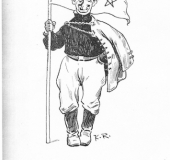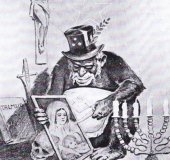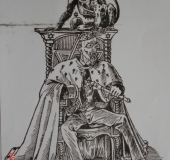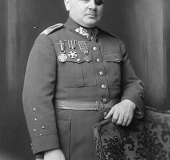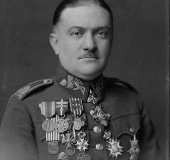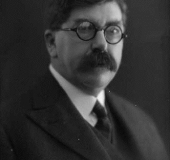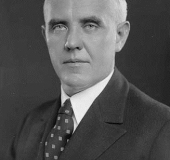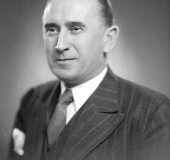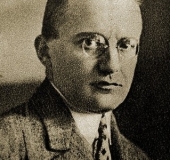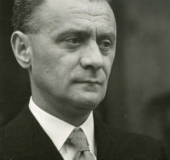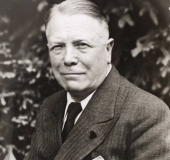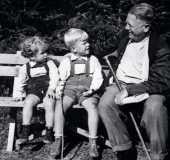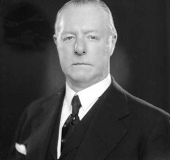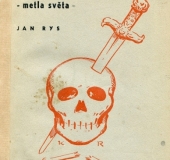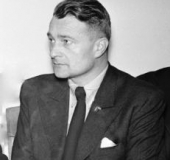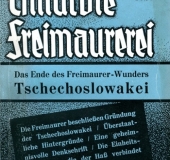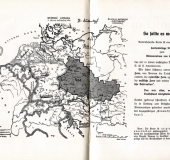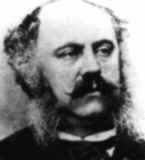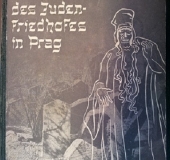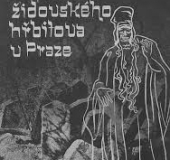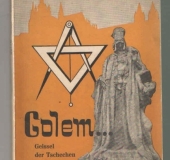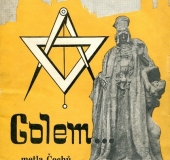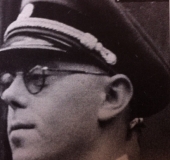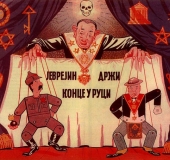Czechoslovakia: A Masonic wonder?
In 1939 Friedrich Hasselbacher published in Berlin a book titled Das Ende des Freimaurer-Wunders Tschechoslovakei (The end of the Masonic wonder Czechoslovakia). It was volume 3A in a series of publications named Entlarvte Freimaurerei (Masonry uncovered) where the European Freemasonry was described along the Nazi point of view. Czechoslovakia got the “honor” of its own volume and being marked as a Masonic Miracle. Was it just Nazi propaganda or was there some truth to this statement? Lets therefor examine the position and influence of Freemasons in Czechoslovakia in the years 1918 – 1948.
Czechoslovakia 1918-1938: The First Republic.
Prestige.
Before the foundation of Czechoslovak Republic in 1918, Bohemia, Moravia and Silesia were part of the Habsburg Austro-Hungarian Empire and Freemasonry was not allowed. However, about 350 Freemasons lived in the Czech lands of which in Prague alone more than 80. They were members in lodges in Germany or Hungary, where Masonry was legal. For most of the population of the Czech lands, Freemasons were something of the past, or something what existed only in foreign countries. As Masonry was not an issue, so also anti-Masonry was not an issue.
After WWI Czechoslovakia emerged as one of the new Central European states after the dissolution of the Austro-Hungarian Empire. It adopted a modern and democratic constitution, which guaranteed freedom for political parties, religious organizations and civic societies like Freemasonry.
The Founding Fathers of the new republic considered lodges as a suitable vehicle to continue their resistance activity from WWI, but now in peace time. Lodge Národ was established by the Italian Scottish Rite in 1919 and rapidly expanded its membership by inviting leading personalities of the new state to join. In 1922 the Scottish Rite for Czechoslovakia was established and internationally recognized. In 1923 followed the foundation of the National Grand Lodge of Czechoslovakia. Already in 1920 there was established the German speaking Grand Lodge Lessing for Czechoslovakia.
The Czech political and social elite build its new state partly on French republicanism and partly on Anglo-Saxon values. Parliamentary democracy, Freemasonry, Rotary, YMCA i.a. were introduced. The Masonic leaders of that time saw Freemasonry as a tool to build a new republic. Their opus magnum was a vision of a state based on Masonic values.
Another important fact remains, that albeit numerically the Catholic Church was by far the biggest, the legacy of Bohemian Protestantism was never fully forgotten and in the national mindset of the Czechs played an honorable role. Therefore the Catholic Church had not such a big influence on the Czech nation as it had for example in Austria, Poland or Hungary.
It is therefore no surprise, that Freemasonry flourished and many leading personalities in government, universities, arts, sciences, army etc. were lodge members. Particularly at the Ministry of Foreign affairs were many Freemasons in leading positions.
The Builders
Some leading politicians and other leaders of the First Republic who were Freemasons:
Click on picture to enlarge and read explanatory text.Adversaries: From mild to wild.
Freemasonry did not find in the inter-bellum much adversaries of any significance and could develop undisturbed. This does not mean there were no attacks on the brethren. These were mostly in the press, but remained marginal. These attacks came basically from two sources. The first came from the clerical (conservative catholic) side and the other from Fascist or ultra-national and populist side. Both got their information from domestic and international sources. The clerics accused the masons of modernism, disturbance of traditional values of society and anti-clericalism. The Fascist on their turn argued that masonry introduces dangerous internationalism leading to loss of national identity, left-wing policies and link to world Jewry.
Both streams stressed the Masonic aspirations for world rule, seeing a chain around the globe which suffocates the whole world. This allegedly happens in the name of serving the Antichrist or Jewish capital or Marxism. In addition, they stressed that the masons infiltrate the mighty and powerful and thus control the Czech society and will finally morally destroy it. Moreover, dark and (bad) foreign powers gain more and more influence and control over Czech Freemasons and this will lead to loss of sovereignty and independence.
How did the Freemasons respond? Generally no public or direct confrontations with these accusations did occur. Lodges preferred to remain silent and mostly the publicity around an attack subsided without consequences. It also helped, that the mainstream newspaper and magazines did not write negative, on the contrary, occasional positive stories were published.
A very special view on Freemasonry gave Karel Čapek (1890 -1938, writer) and Josef Čapek (1887 – 1945, painter). Both brothers belonged to the influential artistic elite of the new Czechoslovak Republic in the period 1918-1938. They were friends of President T. G. Masaryk and strong supporters of a modern, democratic, Western-oriented Czechoslovak Republic. In 1919 both brothers became members of lodge Národ, however, without a proper initiation ritual. This was at that time usual practice, in order to build quickly a large Masonic membership. The Čapek´s felt uncomfortable in the lodge and finally resigned in 1927. In 1922 Karel published a novel called The Absolute at Large (Továrna na absolutno), which is a science fiction novel and describes the fundamental transformations in society as the result of a new mystical source of virtually free energy.It can be interpreted as a vision of a new consumer society. The novel includes scenes in a lodge and pokes gently fun at Masonic ritual activities. The author is, however, sympathetic to masonic values. His brother Josef illustrated this novel and two pen drawings showing a caricature of a lodge.
Felix de la Camára (1897-1945) was a Czech writer, journalist and film maker. He lived in the twenties a life of a wild artist and was also interested in occultism. His book Egyptští zednáři (Egyptian Masons, 1921) and Hrabě Cagliostro (Count Cagliostro, 1922) were sensationalist titles with the aim to sell his books. In the thirties he became a Franco supporter and member of the Czech fascist organization Vlajka and a Nazi collaborator during the German occupation. With Jan Rys-Rozsévač and Václav Bínovec he tried to make the “first Czech film with an anti-masonic theme” named Čtverylka lásky (Quadrille of Love). The plan was never realized. He was murdered by a street mob during the liberation of Prague in 1945.
Karel Rélink (Rohling) (1880 – 1945) was a Czech painter, writer and publicist. He illustrated popular stories, wrote about artist’s life in Prague and made portraits of famous persons like Masaryk and Mucha. The art critics of his time ignored his talent, which was considered to be poor.
However, he became later famous as the most notorious anti-Semitic cartoonist of the First Republic. His publication of short comments and a collection of cartoons titled Zrcadlo židů-žid podle Talmudu (The mirror of the Jew- Jew according the Talmud) published in 1925 contain exclusively anti-Semitic drawings connecting Jews to Bolshevism. In the booklet Spása světa (Saving of the World) published in 1926 we see Freemasonry added, creating the infamous combination Jews – Bolsheviks – Freemasons. In 1935 he had an exhibition in Nürnberg, named Spása Světa –Svobodné Zednářstvi-Rudý terror (Saving of the World-Freemasonry-Red Terror). The same formula was repeated in another publication- Vývin židomarxisty (Development of a Judeo-Marxist) in 1938. A year later follows an exhibition in Prague named Žid – nepřítel lidstva (Jew-enemy of mankind). But the public still ignored Rélink as an artist considering his cartoons as extremely vulgar and primitive. His great time came with the German occupation of Prague, when he was hailed by the Nazis and collaborators as an example of an artist of the (Nazi) New Europe. The great exhibition of his work called Židobolševismus – nepřítel lidstva (Judeo-Bolshevism-enemy of mankind) in 1942 was massively visited and heavily publicized by the authorities. Freemasonry is in Rélink´s work consequently depicted as an instrument controlled by Jews.
Rélink kept close contacts with German anti-Semites and greatly admired Hitler. He painted his portrait, considering it his opus magnum. Finally he painted the national Czech saint, St Wenceslas, with a swastika in the halo and this paining was the only one Hitler accepted from Czech artists for his own collection. In May 1945 Rélink committed suicide.
In addition to these personal anti-Semitic and anti-Masonic crusades there were also the publication Vlajka (Flag) of the Czech fascist and nationalist movement which was founded in 1928 and later the newspaper Árijský boj (Aryan fight) which was one of the worst political tabloids of fascist orientation. Both were frequently attacking Freemasonry.
Czecho-Slovakia 1938-1939: The fall of the Temple.
Appeasement.
With the signing of the Munich agreements in September 1939, the German speaking border areas were ceased to Germany and Slovakia became semi-autonomous. President Beneš resigned and went into emigration and with him his supporters. All Masonic bodies closed voluntarily all activities in October 1938. Munich was for most of the democratic thinking population and certainly for the national elite, believing in the policies of Masaryk and Beneš, and unmitigated disaster. However, in the newly formed government were many Masons, trying to cope with the difficult situation.
It is a paradox that the government of the Second Republic had more ministers-Masons than any previous government before and at the same time the attacks on Freemasonry were most vicious. The most notorious case was the Czech fascist organization Vlajka and its leader Jan Rys-Rozsévač. He published in 1938 a book titled Židozednářství – metla světa (Judeo-Masonry-broom of the world). Here he gave a factual and precise picture of the Czechoslovak Freemasonry. The analysis and conclusions, however, where along the Nazi and Ludendorff lines.
Hunters of Freemasons.
Jan Rys-Rozsévač (1901-1946) was a Czech fascist politician, journalist and collaborator. In 1936 he became member of Vlajka (Flag) a nationalistic organization founded in 1930. During the Second Republic it organized anti-Jewish street terror, attacked government for protecting Jews and acted violently against the state. This led to his arrest and imprisonment. Vlajka was officially disbanded. He was released just before the rest of Czecho-Slovakia was occupied (March 15, 1939) to become leader of Vlajka. Rys-Rozsévač attempted to establish a mass fascist organization and helped to move Vlajka from traditional anti-German chauvinism to collaboration with Nazis and Gestapo. During 1939 – 1940 Vlajka organized mass meetings against politicians and Freemasons of the First Republic as represented by Masaryk and Beneš. The German occupational authorities nevertheless decided to support a group of collaborators around Emanuel Moravec, his political competitor. Because of constant propaganda attacks on Moravec, Vlajka was disbanded at the end of 1942 and the leaders, including Rys-Rozsévač, were sent as privileged prisoners to Dachau. After the war Rys-Rozsévač was tried and sentenced to death. He was hanged in Pankrác Prison in Prague.
Protectorate Böhmen und Mähren 1939-1945.
Black times.
In order to safeguard social peace, the German authorities preferred to keep in the government ministers with some sort of respect with the population. They knew about the Masonic past of most of them, however, this fact was neglected. Prime Minister Eliáš and other Ministers-Freemasons kept contact with the resistance and with the exiled government in London. With the increasing pressure of the German occupying authorities most of the Ministers-Masons resigned. With the arrival of Reinhardt Heydrich as the new Reichprotektor, a ruthless elimination of all resistance took place leading to the resignations of all remaining Ministers-Masons. In September 1941, a week after arrival of Heydrich, Eliáš was arrested, put on trial and sentenced to death. After Heydrich was assassinated in May 1942, Eliáš was finally executed at the Kobylisy Shooting Range as a part of the wide German reprisals for Heydrich’s death. He was the only government leader in German occupied Europe to be executed.
The occupation time saw frequent attacks on Freemasonry, now mostly along the Nazi propaganda line, presenting masonry as an instrument of Jews to gain world power. An interesting publication from this period was Friedrich Hasselbacher`s Das Ende des Freimaurer-Wunders Tschechoslovakei, published in 1939 at the Propaganda Verlag Paul Hochmuth in Berlin in the series Entlarvte Freimaurerei, Band 3a. This was essentially a German publication, and part of a longer series of Hasselbacher`s anti-Masonic studies. Interestingly, Czechoslovakia was here presented as a Masonic miracle or wonder.
Hasselbach tried to present in his Entlarvte Freimaurerei series the events between 1914-1919 as “great Masonic conspiracies to overthrow Throne and Altar of the old order and to establish a new order based on Pacifism, Socialism and Bolshevism and oppression of the German nation. The assassination of Franz Ferdinand on 28 June 1914 in Sarajevo was a Masonic project to destroy the old order. The international Masonic conference on 28 June 1917 at the Grand Orient in Paris formulated a blue print of the post-war order. An international peace fostering body (League of Nations) should be established and also four points were formulated which demanded: Alsace-Lorraine back to France, independent Poland, independent Bohemia and Habsburg nations free. All this Masonic demands were incorporated in the (Masonic) Peace Treaty, signed on 28 June 1919 in Versailles. The (Masonic) League of Nations was established to monitor the Peace Agreement.” In a beaten and demoralized post-WWI Germany, these conspiracy theories resonated and found ready acceptance in a wider population, but particularly in (ultra)nationalistic circles and within the Nazi movement.
But what was the reality?
The murder of Franz Ferdinand was clearly a matter of Serbian nationalism. The Masonic conference in Paris was not as international as presented, but merely a Grand Orient de France initiative to promote their moral and humanistic ideals. Apart from some Latin Grand Lodges mostly following France (Italy, Spain, Belgium, Portugal) only Switzerland and Serbia attended for Europe. Significantly, Britain, Netherlands and the Scandinavian countries did not attend, as of course Germany was not present also. The principal architects of the Versailles peace Treaty were Georges Clemenceau for France, David Lloyd George for Britain and Woodrow Wilson for the United States. None of them were Freemasons. Edward M House, the principal adviser to President Wilson and the author of his Fourteen Points was also not a Mason. Also, Bohemia was not mentioned separately in the Fourteen Points.
So was the creation of a free Bohemia a Masonic project?
Hardly. It was the vision and moral concerns of President Wilson insisting on the self-reliance of the Habsburg nations, including Bohemia. The Czech-Americans, Slovak-Americans, Ruthenian-Americans and the future Czechoslovak President Thomas Masaryk who successfully lobbied in the US for an independent state, contributed to form Wilsons view. The fact that Bohemia was mentioned in the Grand Orient conference document in 1917 could be the result of lobbying of Dr Edvard Beneš, who had studied in Paris and from 1915 till 1919 stayed in Paris, promoting Czechoslovak independence and representing the new republic at the Peace Conference. Masaryk was never a Mason; Beneš joined Freemasonry much later, in 1927.
Hasselbacher also presents a map of post-WWI Europe by Kuffners, showing an expanded Czechoslovakia and a dramatically reduced Germany and Austria. His insinuation is, “that Czechoslovak Masonic leaders have been building their state at the detriment of Germans in Austria and the Reich”. The maps have been drawn by Hanuš Kuffner and later published in “Náš stát a světový mír”, Nakl. Českého lidového knihkupectví a antikvariatu, Praha, 1918. Kuffner was a retired First lieutenant who became a journalist and writer. He was a Czech nationalist and believed that a free and independent Czechoslovakia can be best safeguarded by territorial expansion and minimization of Austria and Germany. Kramář, the first Czechoslovak Prime Minister and Beneš as Foreign Minister, allegedly used these maps at the Paris Peace Conference in spring 1919. The fact remains, that these maps were totally unrealistic and the Peace Conference did define Czechoslovak borders along its historic lines and disregarded claims on Lusatia and on Austrian, German and Polish territory. Moreover, Kramář and Beneš were not Masons at that time, and Václav Klofáč, Minister of Defense became a member of lodge Národ probably a year later. So the conclusion must be that Kuffner`s maps were unrealistic plans of a Czech nationalist, which might have been used as reference material by Kramář and Beneš, who acted also in Czech national interests in Paris. But there is no masonic link here.
Another notorious anti-Masonic publication was Golem…Geissel der Tschechen, die Zersetzung des Tsjechieschen Nationalismus (Golem-Metla Čechů, rozklad českého nacionalismu) written on instructions of Reinhard Heydrich in November 1941 by the head of SD in Prague, Walter Jacobi. It was published by the Orbis Verlag in December 1941. It sold well, reaching many editions and it was available both in German and Czech. Jacobi cleverly tries to tell the reader, that traditional Czech nation and its mass movements like Sokol or Junák (Scout) are in itself good, but they have been usurped by the Masons who in turn were infiltrated by Jews. These serve cosmopolitan and plutocratic powers, a kind of international Golem. Hence, when in 1935 the Freemason Beneš was elected president, and at the same time in the leadership of state, army, academia, Sokol, Junák and culture were Masons, „ Golem got a complete grip on the Czech people, destroying thus the national soul of the Czech nation. With the removal of Beneš and his „corrupt Masonic clique“ which served ultimately the world Jewry, the Czech nation has been freed of this hydra and can regain it national esteem, under the German protection“. The fact was, however, that there were very small numbers of Jews member of Czech lodges and that Czechoslovakia was the only democracy in Central Europe in the late thirties, where democratic leaders were attracted by Masonry, which could still function. It was not the other way round, that lodges would „appoint“their members in public functions.
Dr. Walter Jacobi (1919-1947) was a German lawyer, officer SS and war criminal, who reached the level of SS-Obersturmbannführer. He became infamous as head of the Sicherheidsdienst (SD) in Prague. He has been seconded to Prague on 20 March 1939, five days after the Nazi occupation. In September 1939 he coldly approved a list of students and intellectuals to be shot after they protested against the closing of the university. He was also co-responsible for killings at Lidice. After the war he was tried in Prague, sentenced to death and in 1947 executed.
Sir John Retcliffe was the of the German writer Hermann Ottomar Friedrich Goedsche (12 February 1815 – 8 November 1878) primarily remembered for his anti-Semitism and the extent to which his fiction indirectly contributed to The Protocols of the Elders of Zion. Goedsche worked as a postal employee, but in reality he was an agent provocateur for the Prussian secret police. In his 1868 book Biarritz, Goedsche plagiarized a book by the French satirist Maurice Joly The Dialogue in Hell Between Machiavelli and Montesquieu, and made an addition: the chapter Jewish Cemetery in Prague described a secret rabbinical Council of Representatives of The Twelve Tribes of Israel which meets in the cemetery at midnight for one of their centennial meetings. They report on the progress of their long-term conspiracy to establish world domination. Among the methods to achieve this goal is the acquisition of landed property, the transformation of craftsmen into industrial workers, the infiltration into high public offices, the control of the press, etc. The chairman Levit expresses at the end of the meeting the desire to be the kings of the world in 100 years. This fictional “Rabbi’s Speech” was frequently quoted later as an authentic episode and invoked as a proof of the authenticity of the Protocols of the Elders of Zion. In Nazi Germany the chapter was re-printed independently in many editions. The edition Geheimnisse des Judenfriedhofes in Prag (Secrets of the Jewish cemetery in Prague) of Orbis publishers in Prague in 1943 is such an example. This edition did refer in its introduction to the Golem book of Jacobi. Like Golem, it appeared in both German and Czech versions. Moreover, it became one of the sources of Umberto Eco`s novel Prague Cemetery in 2012.
Exile Government in London 1940-1945
Light in the darkness.
Uniquely, the Czechoslovak National Grand Lodge re-established in London its activity under the protection of the United Grand Lodge of England and its lodge Comenius in Exile had its membership drawn from the political and military exiles in London.
- Dr Edvard Beneš, Czechoslovak Exile President 1941-1945 in London.
- Jan Masaryk, Exile Minister of Foreign Affairs 1940-1945. Member of Comenius in Exile lodge, London
- Hubert Ripka, (1895-1958) Politician, historian, journalist. State secretary for Foreign Affairs in Czechoslovak exile Government in London, MP 1945-8, and Minister of Foreign Trade 1945-8. After 1948 emigrates to US and UK. Lodge Národ, Comenius in Exile Lodge
- Jaromír Nečas (1888-1945) social democratic politician, member of exile -government in London. He was one of the leading figures in the Social Democratic Workers Party in Subcarpathian Rus. He was elected to the Czechoslovak National Assembly in 1924 and 1925 from the Užhorod constituency. Minister of Social welfare 1935-1938. Minister for Reconstruction and State Minister 1940-1942 in London exile government. Member of Comenius in Exile lodge in London
- JUDr Pavel Korbel, General Secretary of Czechoslovak State Committee in London 1940-1945. Member of Comenius in Exile lodge in London.
Phoenix or Icarus?
Pink-red times: National governments 1945-1948
There were no strong anti-Semitic or anti-Masonic expressions after the war in the period 1945-1947 when there was still democracy, be it strongly infiltrated by the Communist.
In the government were the following Freemasons:
- Edvard Beneš, President 1945-1948
- Jan Masaryk, Minister of Foreign Affairs 1945-1948. Lodge Komenský.
- PhDr Hubert Ripka, (1895-1958) Politician, historian, journalist. State secretary for Foreign Affairs in Czechoslovak exile Government in London, MP 1945-8, and Minister of Foreign Trade 1945-8. Member of lodge Národ and Comenius in Exile. After 1948 emigrates to US and UK.
- MUDR Vavro Šrobár, Minister of Finance 1945-1946, Lodge Kollár.
- JUDr Ivan Pietor, (1904-1977), Slovak politician, lawyer, active in Slovak resistance, holder of French Legion of Honor medal, Minister of domestic trade and transport 1945-8. After 1948 retired from public life.
Red rule: Communist governments 1948-1989
When the Communist took power on 25.2. 1948 and established a totalitarian state, they started to liquidate the civic society (middle- and upper-classes) and in the Stalinist show trials occasionally accused the “people’s enemies of Zionist or Masonic plots”. The last two Freemasons, in the now Communist government died soon. In 1951 Masonic lodges ceased all activities. Many Masons emigrated, others were persecuted and a number of Masons joint the Communist Party of Czechoslovakia and made a career in the new “Order”.
- Edvard Beneš, President 1945-1948. Died on 3.9.1948
- Jan Masaryk, Minister of Foreign Affairs till 28.3. 1948 when he was found dead under the window of his office. Till today it is unclear if this was suicide or murder.
- MUDr Vavro Šrobár, Minister in Communist Gottwald government 1948. Member of lodge Kollár. Died 2 years later.
- Dr Oldřich John, (1907-1961), Mayor of Prostějov 1937-9, Social Democratic Chairman of the National Assembly before and after Communist took power. Member Lodge Lafayette in Olomouc before and after the war. In 1948 became Communist. In 1950 resigns his Masonic membership.
Summary.
Can we conclude that Czechoslovakia was a Masonic wonder? Certainly not. This claim was created in 1938 by Nazi propaganda to discredit the Czechoslovak state on the eve of being over-run and annexed by Germany. In the twenties and even more in the thirties, Czechoslovakia was the only state left in Central Europe, in spite of many weaknesses, with a free society based on liberal democracy and rule of law. Many leading personalities of that time were patriots and believers in “their” modern republic. They found their way to Freemasonry as its moral teachings strengthened their social and political conviction. It was not the other way round, as the Nazi propaganda insinuated. Moreover, the National Grand Lodge of Czechoslovakia had in 1938 about 1500 members, which is a very small number on a population of 15 million. And finally, the insinuation, that Jews control Masonry, was completely of the point here, as the Czechoslovak Grand Lodge had nearly no Jewish members. The German speaking Grand Lodge Lessing in Czechoslovakia had a membership of which nearly half was Jewish. However their members had no part and position in the leadership of the Republic.
The sad truth remains that Czechoslovak Freemasons in high state positions tried to be a force for good, but due to historical developments far beyond their reach and control never achieved their dream of a free state based on Masonic moral values.
© Jacob Sadilek

